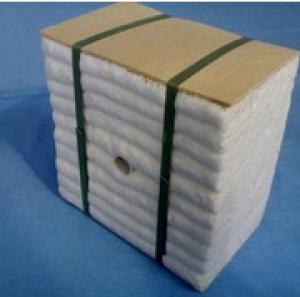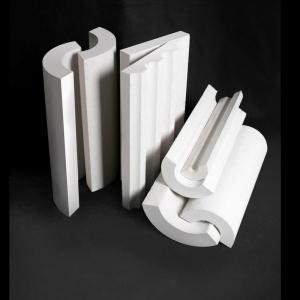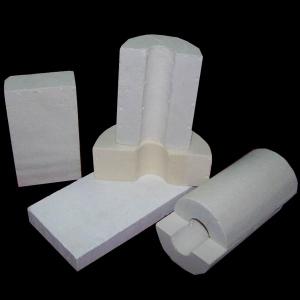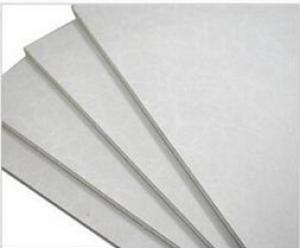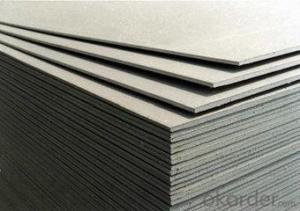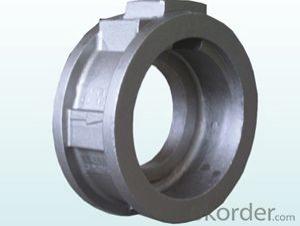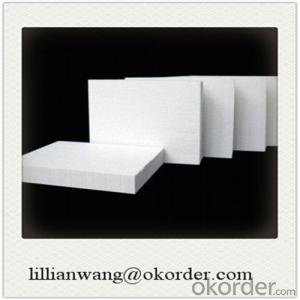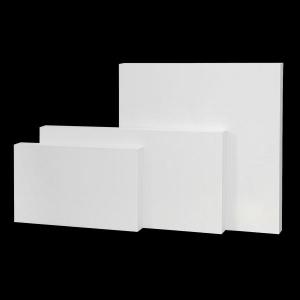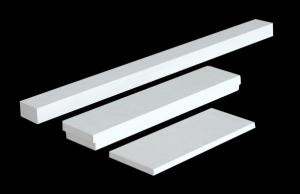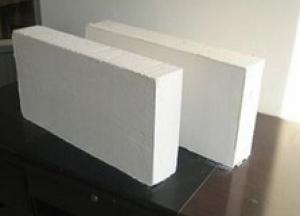Refractory Ceramic Fiber Module For Boiler Insulation
- Loading Port:
- China Main Port
- Payment Terms:
- TT OR LC
- Min Order Qty:
- -
- Supply Capability:
- -
OKorder Service Pledge
OKorder Financial Service
You Might Also Like
Technical Data | ||||||||||||||||||||||||||||||||||||||||||||||||||||||||||||||||||||||||||||||||||||||||
| Main Technical Property of Ceramic Fiber Module:
Note: 1. Product which is classified in accordance with temperature range, can be divided into ceramic fiber cutout, ceramic fiber module and ceramic fiber folded module by different production methods. Our factory is equipped with advanced laboratory; all the figures in the above table are from experiment. We all provide other experiment figures according to customers' requirements.
Size and Specifications of Ceramic Fiber Module:
| ||||||||||||||||||||||||||||||||||||||||||||||||||||||||||||||||||||||||||||||||||||||||
Ceramic fiber will perform excellent refractoriness and improve the integrated thermal insulating performance of the furnace.
Characteristic: (1) Excellent refractoriness
(2) Excellent chemical stability and thermal stability
(3) Low thermal conductivity, low thermal capacity
(4) Resist to external mechanical forces
(5) Able to withstand any thermal shock
(6) Generate no gaps between modules
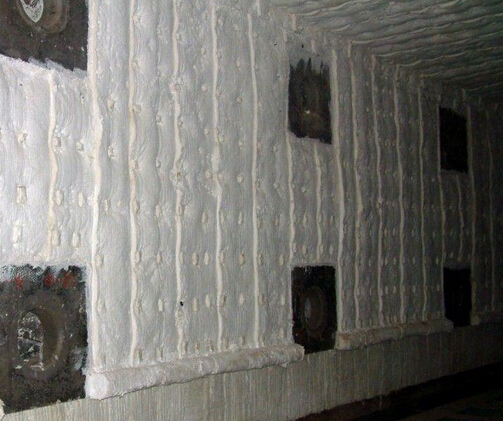

- Q:How to make building glue?
- A building adhesive consisting of 28-50wt% sodium silicate aqueous solution, 34-53wt% quartz sand, and 8-35wt% magnesium silicate. The product of the invention can be used for the bonding of ceramic tile, floor tile, marble, wood and glass in indoor and outdoor decoration of buildings. It can be used as a substitute for cement in the field of tiling. The product of the invention is environment-friendly products without pollution when being produced and used. The utility model has the advantages of low price, strong adhesive force and curing at normal temperature.
- Q:What's the difference between white cement and ordinary cement?
- The typical feature of white cement is high whiteness, with bright color, generally used for a variety of architectural decoration materials, painting, sculpture, a typical floor, terrazzo, white cement can be used to produce white and colored concrete, is the largest cement production decoration.
- Q:What is the maximum temperature at which the glass is cured?
- The softening point of quartz glass is 1600 degrees, it is sodium phosphate and phosphate. Gas burner 1300 degrees, after homogenization processing, after annealing treatment of glass products.
- Q:Eterpan and yinte in what is the difference?
- The silver plate refers to the calcium silicate board. Silver is a trademark, and calcium silicate board is the name of the product
- Q:Which is better, asbestos free calcium silicate and aluminium silicate refractory fiber?
- Aluminum silicate fiber can be divided into many kinds according to the aluminum content, the use temperature range is relatively large, the heat insulation property is good, but the price is more expensive.
- Q:What are the new energy-saving building materials? What's new?
- Mainly include new wall materials, insulation materials, waterproof sealing materials, ceramic materials, new chemical materials, decoration materials and various industrial waste residue comprehensive utilization.
- Q:What is the difference between calcium silicate board and cement fiber board?
- Fiber cement pressure plate is cement, fiber and other raw materials, after pulping, molding, thousands of tons of press. Calcium silicate board is made of silica and calcium plus fibrous material after pulping and formed by chemical reaction in high temperature environment. Therefore, the difference between the two is very large, mainly in the following aspects:1, from raw materials, calcium silicate board and fiber cement pressure plate difference is mainly calcium silicate board cement content is little, with sand and fly ash instead of cement.2, fiber cement pressure plate is a physical product, calcium silicate board is a chemical product.3, fiber cement pressure plate has press, calcium silicate board has no press; calcium silicate board has autoclaved Fu, fiber cement pressure plate no..4. The density of the fiber cement pressure plate is higher than that of the calcium silicate board, the density of the fiber cement pressure plate is above 1.5g/cm3, and the density of the calcium silicate board is about 1.2g/cm3.5, fiber cement pressure plate thickness can do 2.5-100mm, calcium silicate board can not do less than 4mm of ultra-thin plates and more than 30mm super thick plate, general calcium silicate board manufacturers can only do 6-12mm thickness.6, the normal production of fiber cement pressure plate color is cement color, calcium silicate board color is white.
- Q:What is dew point of thermal insulation material?
- Insulation materials, insulation for industrial equipment and piping, thermal insulation measures and material aerogels were first applied to the space suit thermal insulation linings developed by nasa. With low thermal conductivity, small density, high flexibility, fire, waterproof and other characteristics. Its temperature coefficient of thermal conductivity 0.018W/ (K = m) and absolute waterproof, insulation performance is 3~8 times of traditional materials.
- Q:What heat preservation material is used for thermal insulation of steam pipe in power plant? How thick is the bag? Please advise!
- Steam pipe in power plant thermal insulation rock wool board thickness, according to the temperature in the pipeline to choose, the higher the temperature insulation thickness is generally 80 to 150 mm.
- Q:What is a building energy-saving materials?
- Mainly include new wall materials, insulation materials, waterproof sealing materials, ceramic materials, new chemical materials, decoration materials and various industrial waste residue comprehensive utilization.
1. Manufacturer Overview |
|
|---|---|
| Location | |
| Year Established | |
| Annual Output Value | |
| Main Markets | |
| Company Certifications | |
2. Manufacturer Certificates |
|
|---|---|
| a) Certification Name | |
| Range | |
| Reference | |
| Validity Period | |
3. Manufacturer Capability |
|
|---|---|
| a)Trade Capacity | |
| Nearest Port | |
| Export Percentage | |
| No.of Employees in Trade Department | |
| Language Spoken: | |
| b)Factory Information | |
| Factory Size: | |
| No. of Production Lines | |
| Contract Manufacturing | |
| Product Price Range | |
Send your message to us
Refractory Ceramic Fiber Module For Boiler Insulation
- Loading Port:
- China Main Port
- Payment Terms:
- TT OR LC
- Min Order Qty:
- -
- Supply Capability:
- -
OKorder Service Pledge
OKorder Financial Service
Similar products
New products
Hot products
Hot Searches
Related keywords
